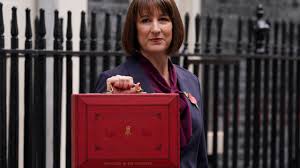By Ayomide Otitoju
Britain’s new Labour government, under Prime Minister Keir Starmer, has announced significant tax increases and expanded borrowing in a push to fund long-term economic growth, marking a sharp pivot after 14 years of Conservative rule. In her first budget update, Finance Minister Rachel Reeves confirmed the measures, which are expected to raise an additional £40 billion ($52 million).
In a bold address to Parliament, Reeves underscored the Labour administration’s commitment to investment-driven growth, unveiling sweeping changes to fiscal rules to channel billions into public services. “This government was given a mandate,” Reeves declared. “To restore stability to our country and to begin a decade of national renewal. The only way to drive economic growth is to invest, invest, invest.”
Labour swept into office with a landslide victory in July and has since rolled out a range of policy commitments, including enhanced workers’ rights, increased minimum wages, a comprehensive green energy strategy, and plans to build affordable housing at scale. However, the decision to scrap the winter fuel benefit for pensioners drew significant public backlash, impacting Starmer’s approval ratings.
Key Budget Highlights
The government’s plan includes a £25 billion increase in employers’ national insurance — a payroll tax used to fund social care. The decision sent the pound slightly higher, with London’s stock market remaining steady. Kathleen Brooks, research director at XTB, noted that the tax hikes have yet to alarm financial markets, signaling confidence in Labour’s approach.
Reeves emphasized that the government remains committed to its pledge to avoid raising income taxes, employee national insurance, or VAT. But outgoing Conservative leader Rishi Sunak criticized the budget as a series of “broken promises” and argued it imposes an “anti-business regulatory wave.”
Increased Borrowing for Capital Investment
Reeves introduced a technical change to debt measurement, allowing for increased borrowing despite public sector borrowing already at levels last seen in the 1960s. This revised metric, which includes future investment returns, is aimed at bolstering capital infrastructure such as schools, healthcare, and childcare. The day-to-day budget for the National Health Service will see a substantial increase of nearly £23 billion.
However, Paul Johnson, Director of the Institute for Fiscal Studies, warned of the high stakes in managing this borrowing. “The challenge will be to ensure the funds are invested efficiently to make those costs worthwhile,” he remarked.
Economic Growth Forecasts
Reeves shared updated forecasts for Britain’s economy, predicting GDP growth of 1.1 percent in 2024 and 2.0 percent in 2025, both higher than prior estimates by the Office for Budget Responsibility (OBR). Britain’s inflation rate has dropped below the Bank of England’s 2 percent target, alleviating some pressure from the cost-of-living crisis. The IMF has also projected Britain’s economy will grow by 1.1 percent in 2024. However, the OBR revised its outlook, lowering growth forecasts for 2026 to 2028, tempering longer-term optimism.
By aligning the government’s investment approach with updated fiscal frameworks, Labour seeks to chart a transformative course for the UK, aiming to reshape infrastructure, public services, and sustainable economic development.












